|
Notes: North Woolwich Station was in an isolated position on
the north bank of the Thames opposite the market and military
town of Woolwich on the south bank of the Thames. It was provided
to serve Woolwich via a ferry operated by the Eastern Counties
Railway. The surrounding area remained undeveloped for some
years until the arrival of the docks brought industry and prosperity
to the area.
 |
In 1854 the station was rebuilt with new platforms and a new
building slightly to the south of the original terminus. The
original station layout is shown on the map below. A new station
building replaced the earlier wooden structure and was sited
where the turntable is shown. At this time the station was provided
with three platform faces, two of which ended in a small turntable |
in front of the station building. The goods yard was sited on
the south side of the station.
The station was severely damaged during a German air raid on
7th September 1940 at the start of the London blitz on the docks.
The platform canopies were largely destroyed and subsequently
removed and a train standing in the station was damaged.
| During the 1960's the goods yard was rationalized being reduced
to a coal depot on 25.2.1963. The goods service was eventually
withdrawn on 7th December 1970 by which time the goods yard
had been reduced to a public delivery siding.. With the introduction
of single line operation on 25th August 1969 only one platform
was required and the track was |
 |
lifted into the former down platform.
In 1979 during the refurbishment of the North Woolwich line
the 1854 building was taken out of use and a new smaller roadside
building was built a little to the south. The track was re-laid
into the old up platform which was now brought back into use
and track into the up platform was lifted.
The old station building and down (northern) platform were
acquired by the Passmore Edwards Trust and after renovation
the Old Station Museum was opened by the Queen Mother in November
1984.
The station closed temporarily on 29th May 1994 during the
construction of the Jubilee Line (which doesn't serve North
Woolwich) reopening on 29.10.1995.
With closure of the station in 2006 the museum will continue
to open at weekends January - November and will eventually be
handed over to London
Rail Heritage Centre who are planning to introduce a heritage
rail service into North Woolwich.
Click here for a numbered limited
edition commemorative brochure produced by the North Woolwich
Old Station Museum for people travelling on the last train on
19th December 2006
BRIEF HISTORY OF STRATFORD
- NORTH WOOLWICH LINE
In 1833 a railway line was proposed from Limehouse, to the north
bank of the Thames opposite Woolwich. Nothing came of this scheme
but in 1842, George
Parker Bidder put forward a proposal to link the Eastern
Counties Railway at Stratford with the Thames to enable seaborne
coal to be distributed throughout East Anglia.
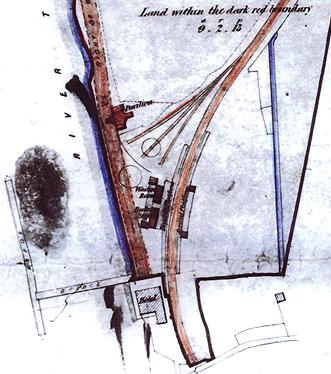 The original station layout. The station
was rebuilt in 1854 with the station building sited where
the turntable is shown.
The original station layout. The station
was rebuilt in 1854 with the station building sited where
the turntable is shown. |
Bidder's scheme was incorporated by Act of Parliament
in 1844 as the Eastern Counties & Thames Junction
Railway, with powers for a line from Stratford to a terminus
on the Thames near the mouth of Bow Creek. It was opened
between Stratford and Barking Road on 29th April, 1846
and was purchased by the E.C.R. in August of that year.
Meanwhile, in 1845, an Act had been obtained for the
North Woolwich Railway, which was to extend the Thames
Junction line to a point on the river opposite Woolwich.
Despite opposition from the Board of Trade the bill was
passed as the line would provide access to Woolwich and
its arsenal which at that date was without a railway connection.
|
Bidder's scheme was incorporated by Act of Parliament in 1844
as the Eastern Counties & Thames Junction Railway, with
powers for a line from Stratford to a terminus on the Thames
near the mouth of Bow Creek. It was opened between Stratford
and Barking Road on 29th April, 1846 and was purchased by the
E.C.R. in August of that year.
| Meanwhile, in 1845, an Act had been obtained
for the North Woolwich Railway, which was to extend the
Thames Junction line to a point on the river opposite Woolwich.
Despite opposition from the Board of Trade the bill was
passed as the line would provide access to Woolwich and
its arsenal which at that date was without a railway connection.
|
 |
After completion, the North Woolwich Railway was bought by
the E.C.R. in 1847 and the 21 mile line was opened on 14th June,
1847, together with a curve to the main line at Stratford, enabling
through trains to be run between the Eastern Counties terminus
at Shoreditch and North Woolwich. There were two intermediate
stations at Stratford Bridge (later Stratford Market) and Barking
Road (later Canning Town).
The branch quickly proved popular and an hourly service was
established between Shoreditch and North Woolwich where two
steam ferries, owned by the railway, provided the connection
to Woolwich itself.
The line was extended northwards to a junction with the North
London Railway at Victoria Park on 15th August 1854, to accommodate
these trains; a new station was opened at Stratford Low Level.
On 31st March 1858, the London Tilbury & Southend Railway
opened a loop to the North Woolwich line at Abbey Mills providing
a route into Fenchurch Street.
In 1849 the South Eastern Railway opened their line to Woolwich
resulting in a huge loss in revenue to the North Woolwich line.
In an attempt to gain revenue there was some development around
the remote North Woolwich terminus. Silver & Company established
a factory adjacent to the line and prospered to such an extent
that the locality became known as Silvertown.
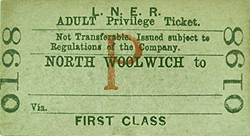 |
In 1850 the Victoria Dock Company was authorised by Act of
Parliament to construct a dock east of Bow Creek and immediately
north of the railway. The entrance to the dock cut across the
railway and to avoid disruption to traffic the North Woolwich
branch was diverted around the north side of the dock, to rejoin
the original line about three-quarters of a mile |
west of the
terminus. A station was opened on the new line at Custom House.
The original line was retained to provide railway connections
to the numerous factories which sprang up along the river bank
crossing the entrance to Victoria Dock by a swing bridge; it
was known as the Silvertown
Tramway.
Victoria Dock opened in 1855 and was an immediate success with
its direct connection to the Great Eastern Railway. The district
surrounding the railway quickly prospered with new stations
opening at Tidal Basin and Silvertown. In 1862 the E.C.R. merged
with other lines to form the Great Eastern Railway.
In 1874 the Beckton gasworks company opened a single-line branch
from Custom House to their works and in 1880, another branch
was opened from Custom House to a terminus at Gallions close
to the dock basin where the P. & O. liners berthed.
| In 1864, the Victoria Dock passed to the London
& St. Katherine Dock Company, which, in 1880, opened
the Albert Dock as an easterly extension of the Victoria;
it was joined to the latter by a short cut. It was again
necessary to divert the North Woolwich line and an 1875
Act gave the dock company powers to divert the loop line
through a tunnel under the cut between the two docks. |
 |
The original line was retained as the high-level route owned
by the dock company but in the event of the tunnel becoming
impassable through any cause, the Great Eastern had the right to
use the original route free of charge until the tunnel was again
fit for use.
In 1872 the Great Eastern Railway opened a new line from Bethnel
Green to Stoke Newington and Lower Edmonton with a branch from
this line at Seven Sisters opening to Palace Gates in 1878.
On 1st January 1880 a new spur was opened allowing a new service
to be established between Stratford and Palace Gates, this service
later ran through to North Woolwich.
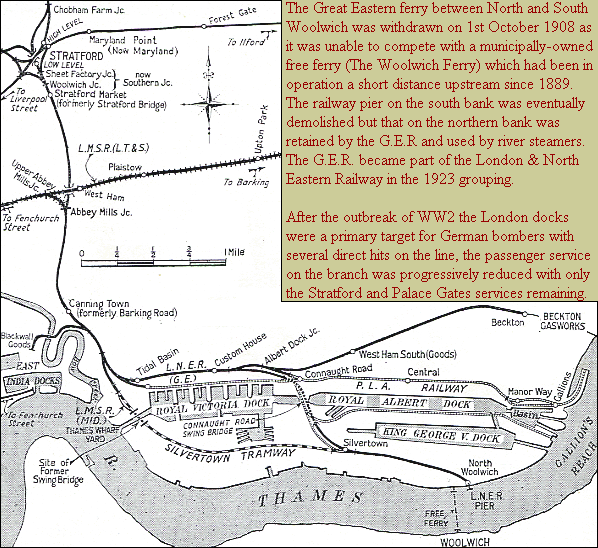
Both the Gallions and the Beckton branches were closed to passengers
on September 7, 1940. Tidal Basin Station was closed to all
traffic from 15th August 15 1943 after it was damaged by enemy
action. Freight traffic to and from the docks was also affected
inevitably by the war. In the early war years labour and equipment
were transferred from London to other ports, but in 1944 preparations
for D-Day put a heavy strain on the railways feeding the London
docks.
| After the war passenger numbers were in decline with commuters
finding the busses and trolley buses more convenient; freight
traffic was initially less affected but road haulage was beginning
to make significant inroads. Passenger trains continued to run
between Palace Gates and North Woolwich with short workings
to and from Stratford Low Level. Stratford Market Station closed |
 |
in in 1957 and weekend services were withdrawn shortly afterwards.
The service between North Woolwich and Palace Gates was withdrawn
in 1963 and by the mid 1960's freight traffic had dwindled away
to almost nothing and one by one the local goods depots were
closed with the final blow coming in the late 1960s with the
rapid decline of their docks.
The goods service was withdrawn from North Woolwich in 1970
and the passenger service was expected to follow with the line
east of Custom house being reduced to single track. A reprieve
came at the end of the 1970's when the GLC joined forces with
British Rail to revitalize the North Woolwich line by extending
the service from Stratford over the freight only North London
line to Dalston Junction.
 |
The line between Stratford and Dalston Junction had not seen
a passenger service since 1943. New stations at Hackney Wick
& Hackney Central were provided and all the stations between
Stratford & North Woolwich were rebuilt. At North Woolwich
this included the closure of the 1854 Grade II listed building.
A new entrance building was provided on the south side of the
line and the track re-laid into the southern platform |
to serve
it. A new station provided at West Ham for interchange with
the District Line.
The old station building and down (northern) platform were
acquired by the Passmore Edwards Trust and after renovation
the Old Station Museum was opened by the Queen Mother in November
1984. In May 1985 the line between North Woolwich and Dalston
was electrified with a new service introduced between North
Woolwich and Richmond with the resumption a full weekend service.
The section between Custom House and North Woolwich was closed
completely as both North Woolwich and Silvertown stations are
within 300 yards of existing DLR stations.
| Despite this huge investment
in the North Woolwich Line its future was not secure. With
the expansion of the Docklands Light Railway the line between
Stratford Low Level was closed on 9th December 2006. The
section between Royal Victoria and Stratford has been handed
over to the DLR and will be rebuilt as an extension to the
DLR between Royal Victoria and Stratford International,
due to open in 2010. |
 Souvenir ticket for the last train on 10.12.2006
Souvenir ticket for the last train on 10.12.2006 |
There are proposals to hand much of this section of the line
over to Crossrail
who will incorporate it into their route but construction is
unlikely to begin until at least 2013. In the meantime the Old
Station Museum at North Woolwich is due to be cleared of its
exhibits and archive and the Grade II listed building will be
handed over to The London
Rail Heritage Centre who are proposing to run a heritage
rail service between North Woolwich and Custom House and a rail
school until the land is required. This will include the building
a new servicing facility on part of the former goods yard.
Click here to see Silverlink closure
poster
Tickets from Michael Stewart
Sources:
To see the other stations on
the Stratford Low Level - North Woolwich line click on the station
name: Stratford
Low Level, Stratford
Market, West Ham,
Canning Town (2nd),
Canning Town (3rd),
Tidal Basin
& Silvertown
See also Gallions
& Beckton branch
lines & North Woolwich Pier
Click here for
pictures of North Woolwich line including Connaught Tunnel
|

old1.jpg)
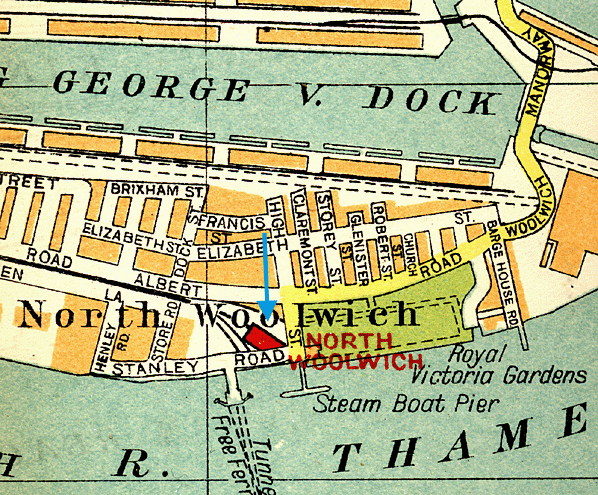
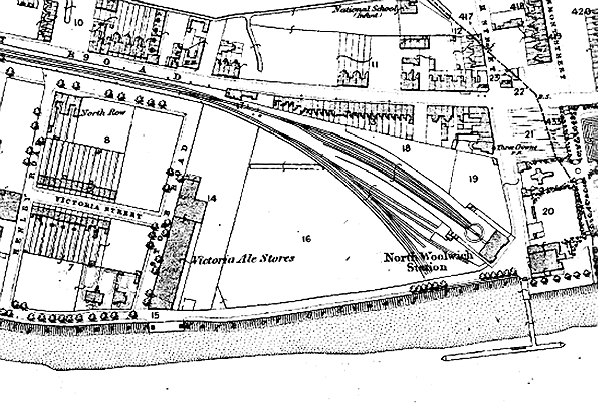
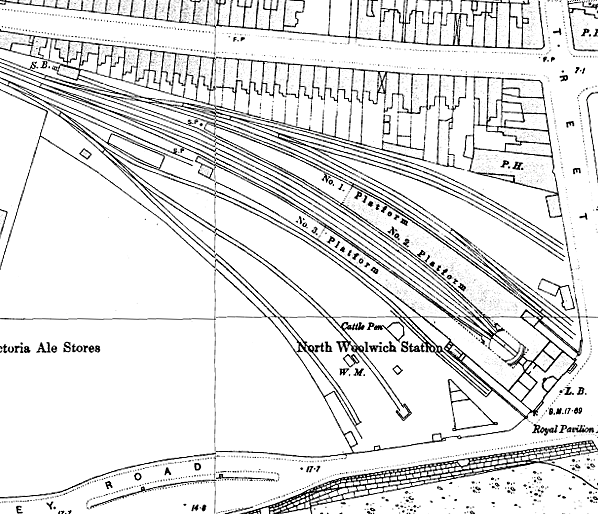
old9.jpg)
old11.jpg)
old14.jpg)
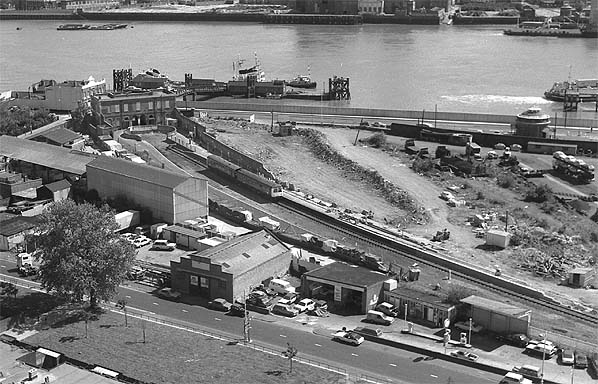
old7.jpg) North Woolwich Station in the 1970's - by this date the 1854 building
was in poor condition
North Woolwich Station in the 1970's - by this date the 1854 building
was in poor condition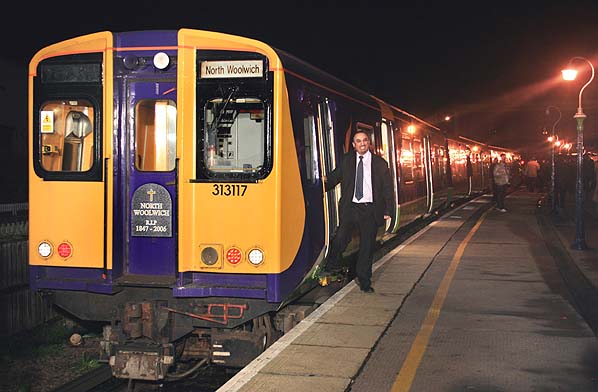
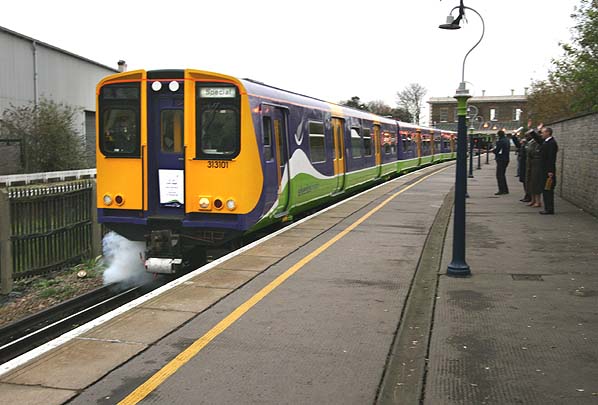
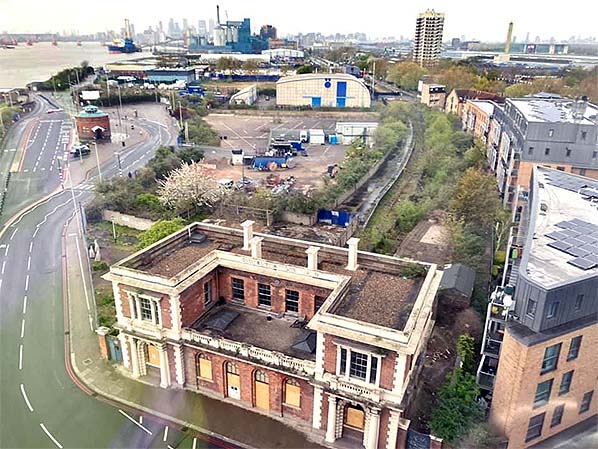
 Home
Page
Home
Page










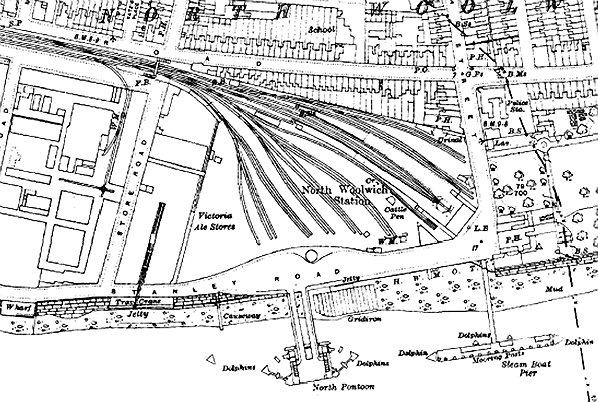
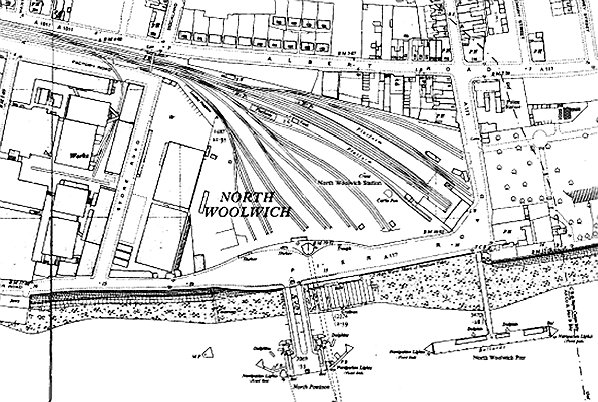
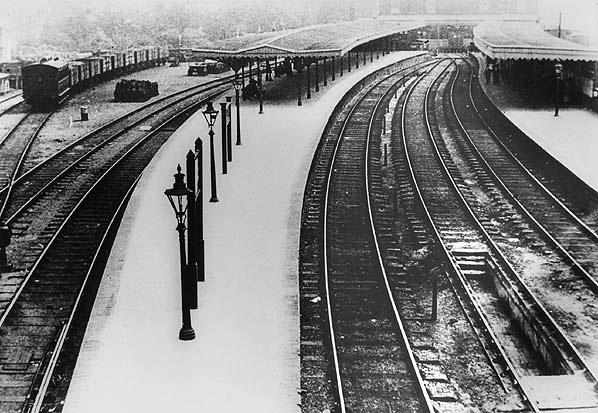





old_thumb15.jpg)








